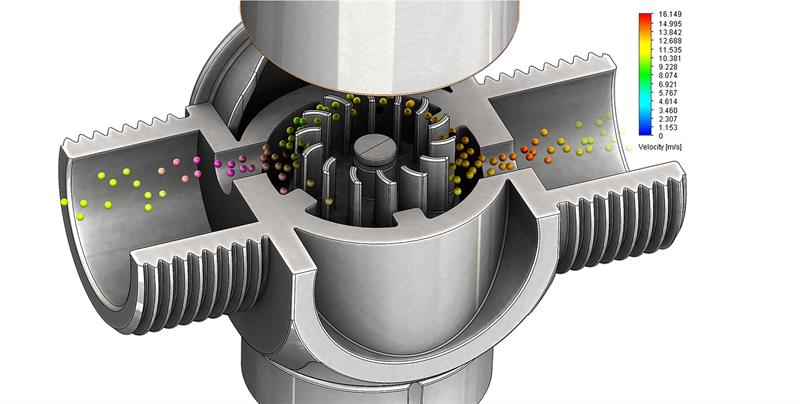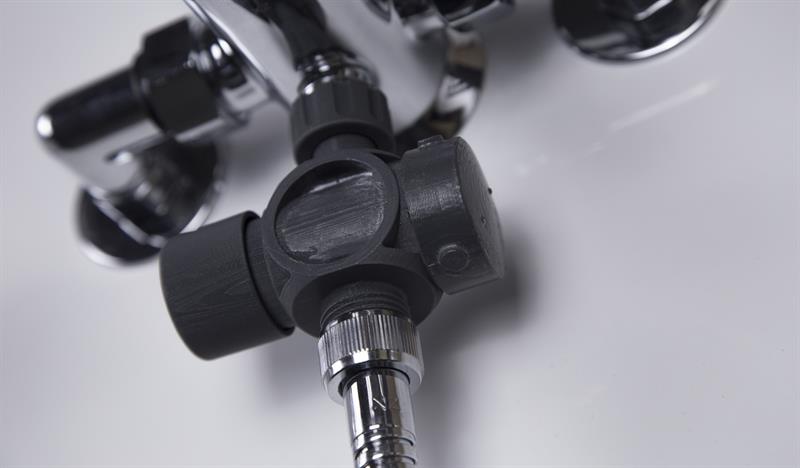Water saving, has therefore become a headline environmental mission and engineers are coming up with all kinds of ingenious solutions to help everyone do their bit. This led to Hampshire-based consultancy 3form Design being approach to produce a low cost water limiting device for the consumer. And, it’s not just for the conscious. With more homes being fitted with water meters and areas such as California experiencing regular drought, saving water has become a mainstream demand.
“We immediately thought, for this to be really effective in controlling and reducing water use, we need to measure the actual amount of water used,” said Ally Le Sueur, operations manager at 3form Design. “The aim is to help people better understand just how much they are using.”
The problem is that many water saving devices use time, rather than volume, to limit use. Of course, this omits things like water pressure and how much the user turns the tap on, so these largely fall in to the gimmick gadget category. And those that do measure flow are often smart devices, accompanied by an app, embedded electronics and of course a hefty price tag.
The team wanted to make it easy for people to know how much water they use in two main areas, in the shower and through the hose pipe. Long power showers, washing the car and using a garden sprinkler use a vast amount of water, and most simply don’t realise.
“We wanted to create a passive system – so no electronics and essentially a fit and forget mechanism that is low cost,” added Le Sueur. “It enables the user to monitor their usage in ‘packets’, so they can make more informed decisions.”
 The principle is that the device can be easily attached between the shower head and shower or between an outside tap and hose, and it shuts off after 45L of water has passed through. This can easily be reset by pushing a button on the side, which will allow another 45L of water through.
The principle is that the device can be easily attached between the shower head and shower or between an outside tap and hose, and it shuts off after 45L of water has passed through. This can easily be reset by pushing a button on the side, which will allow another 45L of water through.
The relatively small 45L capacity was intentionally set on the conservative side, as fundamentally the device is about reducing water consumption. For comparison, an average shower will use 65L in 8 minutes and a typical bath, 80L. The product is not an alarm, and does not measure cumulative use. The aim is to put water use in the forefront of people’s minds and enable them to make conscientious decisions.
“You can still have a long shower but you know that you might use 90L,” said Le Sueur. “Or you can turn the tap down and reduce the pressure and have a longer shower that way. Water is a commodity, so if you want to use it, use it. What this does is educate people so they know what they are using.”
The device works by using an impeller that is driven by water flow. In turn, this drives a fixed ratio epicyclic gearbox. The gearbox steps down to trigger a mechanism that will shut off after 45L. This is then reset by pressing a button on the outside housing of the device, which resets the trigger mechanism back to its original position. The team quickly realised that the step down in gearing would require a pretty extraordinary gear ratio.
To gain inspiration the team began looking at epipcyclic watch mechanisms as well as dissecting an egg timer. Though this gave an them a useful insight, the team needed to take a leap and quickly evolve the design to get to the 262,000:1 gear ratio required, which also needed to be made in plastic. Too add to the design challenge, the device also needed to fit through a letter box, meaning a space constraint of 44mm wide, about the same as a golf ball.
“We used an epicyclic gearing because you can make them really compact and you can get high ratios,” said Simon Willis, product designer on the project. “At first glance, if you strip down the mechanism and have a look inside, it looks like a fairly standard gearbox. But, there are many nuances in the way it all comes together and I’m sure there aren’t any as small as this one.”
Engineering the device so it could be made at a price point in the regions of £10 to £20 meant the gearing and housing would need to be made using plastic injection moulding. The challenge here was making sure the tiny gears work reliably, while making the surrounding housing strong enough to take the loads that it would be regularly subjected to.
“We decided we’d 3D print the gears and assemble the mechanism so we could test it,” said Willis. “We marvelled at how small the gears were and how well the printer had produced them.”
The team’s in-house Stratasys Connex Fused Deposition Modelling (FDM) machine has become invaluable as a design and development tool, especially on projects that involve so many iterations to get right, like this.
“FDM produces parts that are real ABS and really functional,” said Willis. “That allowed us check our design  data and prove the principles we’ve used to bring it together.
data and prove the principles we’ve used to bring it together.
“We did do a lot of simulation and producing it FDM and seeing it work, with what is a courser and more fragile material, gives us a huge amount of confidence going forward into mass production.”
The product known as FloSTEM is due for release early next year and has already sold around 1.5 million shower attachment units and 1.5 million hose attachments. This is partly thanks to being picked up by the giant US retailer, Walmart. And, while the current product is fixed at 45L, it is hoped future product variants could offer different capacities.
Fast Facts
|





